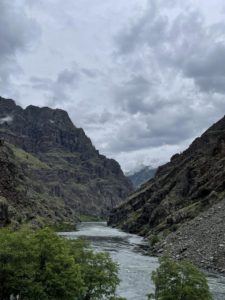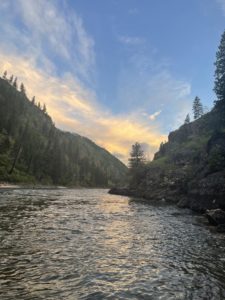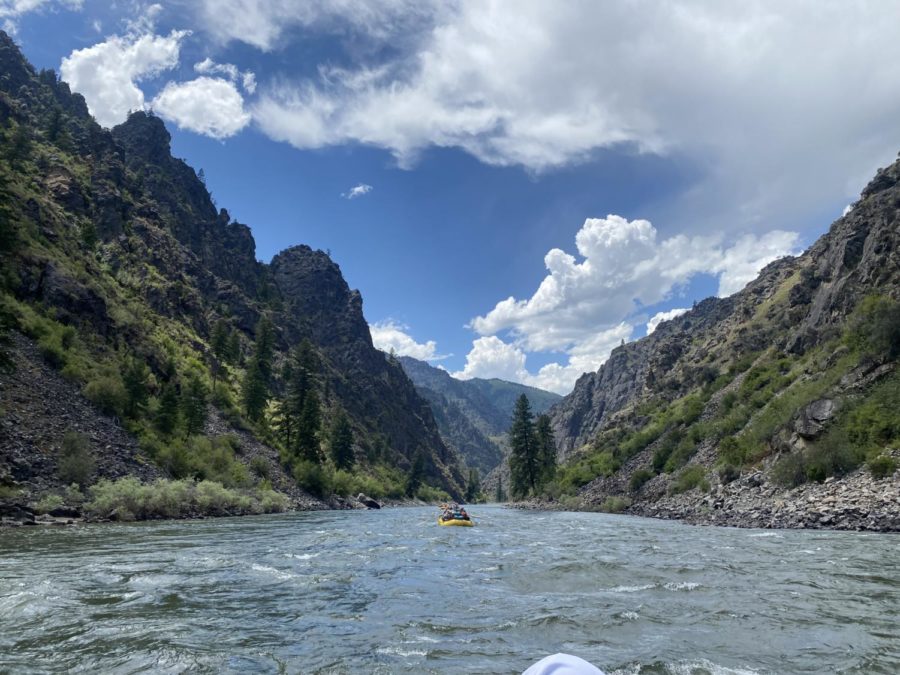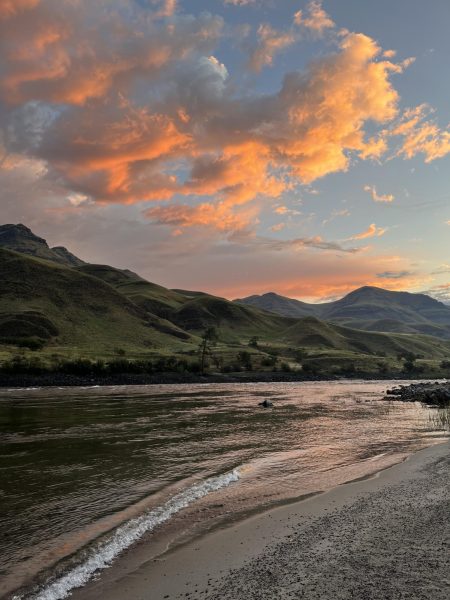Wild and Scenic?
There is a place in the panhandle of Idaho where the world feels a little holier, where the water flows blue and cold and reckless, where sunsets creep over cliff-sides towering above the river bank. This place is sacred; the region is referred to as the Frank Church Wilderness. It is the largest continuous wilderness reserve in the United States, excluding Alaska. Within this wilderness there are several rivers, some that run free and untamed, or as the forest service would say “Wild and Scenic.” The Wild and Scenic Rivers Act was passed by Congress in 1968 as an environmental push to preserve the integrity of rivers across the United States. Idaho was particularly affected by this act, due to the state’s bountiful river systems. The act protected the Salmon River from being dammed multiple times and protected the Hells Canyon section of the Snake, along with many other smaller rivers throughout the state. Although dams are quite ubiquitous, The Wild and Scenic Rivers Act has positively affected river ecology across the United States. The largest and most well-known, traveled, and fished rivers in Idaho are the Snake and the Salmon, famous for the native salmon including the Sockeye, Chinook, and Kokanee that once migrated up and down these river corridors. Unfortunately, despite the Wild and Scenic Act, salmon in Idaho are struggling to reproduce and thrive due to human impact.
The life of salmon follows a fascinating trajectory from spawning to death. When a female salmon is nearing the end of her life, she will spawn and lay eggs in the cold freshwater of free-flowing rivers. If the eggs are fertilized, the eggs will become alevins, or premature salmon, in spring. These alevins will develop and grow, spending at most one to two years in their freshwater birthplace, then eventually begin a long migration downstream to the ocean. As the young salmon travel, they mature and feed heavily, preparing their bodies for the ocean habitat ahead. The salmon’s ability to live in both freshwater and saltwater makes them an anadromous species. Once the fish reach the ocean, they can live there for up to seven years, depending on the type of salmon. Then, for some instinctual, unknown reason, the salmon turn around and travel all the way back to their exact birthplace upstream. They are able to sense and smell where they were spawned and hatched and return to this exact location where they themselves spawn and, shortly after, die. It’s a truly incredible pattern of nature.

However, this impressive migration has taken a severe blow in the last 50 to 60 years. According to an article by the Idaho Chapter of the Sierra Club entitled “Salmon and Steelhead Recovery,” the implementation of dams throughout practically every major river, including the Snake and the Salmon, has made the spawn-to-ocean cycle nearly impossible for the salmon, and their populations, particularly the Sockeye and Chinook, have plummeted accordingly. “After 30 years and more than $17 billion spent on failing federal recovery efforts,” Sierra Club said, “Idaho’s salmon and steelhead are in crisis and face the growing threat of extinction.”
Rep. Mike Simpson, R-ID, agrees. Simpson has proposed the removal of four dams on the lower Snake River and has plans to supplement the energy, agricultural and economic benefits of the dams. The dams are in dire need of repair which would cost nearly as much as complete removal. Simpson, quoted in The Spokesman-Review’s article, “Fate of Republican Mike Simpson’s plan to remove Snake River dams lies with Democrats and Biden Infrastructure Package,” said, “‘You need to do everything you can to try to restore salmon runs, every alternative, before you look at taking out dams… the reality is, we’ve tried everything else.” Simpson has gained support from indigenous communities in this effort, along with many other concerned Idaho residents. The plan is not without opposition, but Simpson is hopeful that his bold idea will eventually become Idaho’s last resort. Though no one is certain that dam removal will solve the salmon crisis, it may be the last chance to try before the situation becomes too dire.

The trials of salmon are particularly tragic in Idaho. In a place where rivers are so ubiquitous and a long history of plentiful fishing permeates the culture, the decline of salmon has been devastating. So, does making a river Wild and Scenic protect it from the jurisdiction of dam development? Unfortunately, no. The Snake River, a Wild and Scenic river, has 15 total dams. But fish and environmentalists alike are hopeful that the proposal to remove the lower four dams could revitalize this Wild and Scenic river. Idaho is a magical place; the mystique of the landscape is nourished by the rivers. Not only would dam removal improve fish life, but it could also revitalize the Snake River corridor, making it once again a truly wild river.




